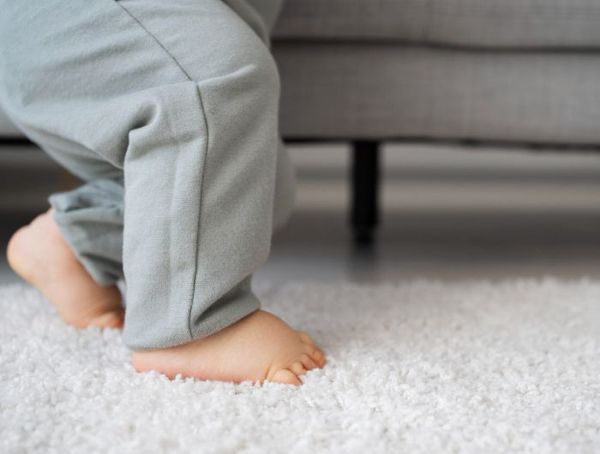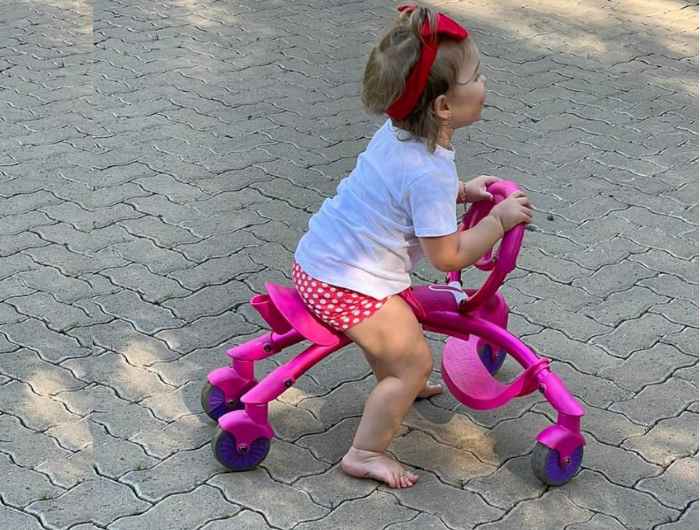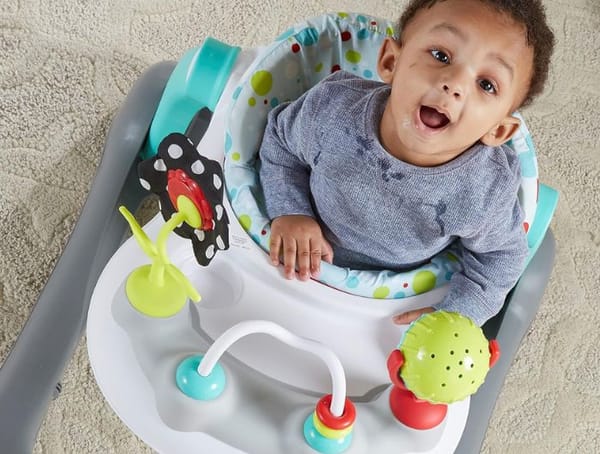We all know how exciting it is to see our little ones take their first steps. But, when do babies start walking?
Typically, babies start walking between 9-16 months. On average, most babies take their first steps around their first birthday. Generally, factors like genetics, temperament, and practice opportunities can influence when babies begin walking.
So, now that we know the general timeline for when babies start walking, let's dive deeper into the factors influencing this milestone and how you can support your little one's progress.
The Magic Window: When Do Babies Start Walking?
In general, babies start walking between 9 and 16 months, with most taking their first steps around their first birthday. However, some early walking babies may surprise you by cruising around as early as 8 months, while others might take until they're 18 months to walk independently. According to the American Academy of Pediatrics (AAP), most babies start walking between 12 and 15 months of age.
Factors Influencing When Babies Walk
Several factors can impact when your baby starts walking, including:
Genetics: If you or your partner were early walkers, chances are your baby might follow suit.
Temperament: Some babies are natural risk-takers and may attempt walking sooner than their cautious counterparts.
Opportunities for Practice: Providing a safe environment and ample opportunities for your little one to practice their walking skills can make a difference in when they start walking.
How Can I Help My Baby Learn to Walk?
Provide them with plenty of opportunities to practice. This means letting them crawl, cruise, stand, and take steps on their own. You can also play games with them that involve movement, such as rolling a ball, chasing a toy, or dancing to music.
Offer them support and guidance. You can hold their hands or use a toy or a scarf as a prop for them to hold on to. You can also place furniture or objects around them that they can use as support, such as a couch or coffee table. However, make sure that these items are stable and secure and that there are no sharp edges or corners that could hurt your baby.
Praise your baby for their efforts and achievements. Celebrate every milestone, no matter how small, such as standing up, taking a step, or walking across the room. This will boost your baby's confidence and motivation to keep trying.
What are the Signs of Early Walking?
Some babies may show signs of early walking before they reach their first birthday. These signs include:
- Pulling up to stand by themselves
- Cruising along furniture or walls
- Standing without support for a few seconds
- Taking one or two steps without support
- Walking with support from an adult or a toy
If your baby is showing signs of early walking, you should be happy and proud of them. However, you should also be aware that early walking does not necessarily mean that your baby is advanced or gifted. Early walking is not an indicator of intelligence or future success. It is simply a variation in normal child development.
Similarly, if your baby is not showing signs of early walking, you should not be concerned or disappointed. Late walking does not mean that your baby is slow or delayed. It does not affect their cognitive or social skills either. As long as your baby is healthy and happy, they will walk when they are ready.
Baby Walkers: Helpful or Harmful?
The baby walker has been a controversial topic in the world of child development. While they can provide entertainment and encourage movement, they've also been linked to infant walker related injuries and delayed walking milestones.
Instead of relying solely on infant walkers, consider alternatives like stationary activity centers or allowing your baby to cruise along furniture like a couch or coffee table.
Encouraging Walking Skills
To help your baby develop their walking skills, try these tips:
Tummy time: Encourage tummy time from an early age to help your baby strengthen their core muscles.
Cruising: Once your baby can pull themselves up, let them cruise along furniture like a couch or coffee table.
Assisted Walking: Hold your baby's hands and guide them as they practice walking.
Barefoot is Best: It's essential for babies to feel the ground beneath them when learning to walk. Let your baby wear shoes only when necessary for protection.
Baby Proofing for Independent Walking
As your baby begins to walk independently, it's crucial to ensure your home is safe for their newfound mobility. Baby proofing measures like securing furniture, covering outlets, and installing safety gates can help create a secure environment for your little explorer.
Make sure that all doors and windows are locked, all electrical outlets are covered, all cords and wires are tucked away, all sharp objects and small items are out of reach, all cabinets and drawers are secured with locks or latches, all stairs and balconies are gated or fenced off etc.
Supervise your baby at all times when they are walking around. Never leave them alone in a room or outside without an adult nearby. Also check the floor for any spills or objects that could cause them to slip or trip.
When to Seek Help
While it's essential to remember that every child develops at their own pace, it's also vital to keep an eye on their progress. If your baby hasn't started walking by 18 months or shows signs of difficulty with other motor skills, it's a good idea to discuss your concerns with a pediatrician.
The 4 Stages of Learning to Walk
Stage 1: Building Strength and Balance
Before your baby can start walking, they need to develop the strength and balance necessary to support their body weight. This stage typically begins around 3-6 months when your baby starts spending more time on their tummy. Tummy time is crucial for developing muscles in the neck, shoulders, and back, which will eventually help them sit up, crawl, and walk.
How to support this stage:
Encourage regular tummy time sessions, gradually increasing the duration as your baby gets stronger. Offer your baby toys during tummy time to make it more engaging and fun. Help your baby practice sitting up with support, gradually reducing assistance as they gain confidence.
Stage 2: Cruising and Crawling
Between 6-12 months, babies begin to explore their environment by crawling and cruising. Cruising involves holding onto furniture or other support while moving sideways. This stage is essential for developing coordination and balance, as well as preparing their legs for walking.
How to support this stage:
Create a safe environment for your baby to explore, removing any potential hazards. Encourage your baby to move between pieces of furniture, like a couch and coffee table, to practice cruising. Allow your baby to go barefoot as much as possible to help them feel the ground and develop their balance.
Stage 3: Standing and Taking First Steps
Between 9-16 months, most babies will start standing independently and taking their first wobbly steps. At this stage, your baby is developing the confidence to let go of support and rely on their own balance.
How to support this stage:
Offer your baby a stable object, like a coffee table or sturdy chair, to hold onto while practicing standing. Be patient and provide lots of encouragement as your baby takes their first steps. Consider using a push toy or baby walker to help your baby practice walking, but be aware of potential safety hazards and avoid over-reliance on these devices.
Stage 4: Walking Independently
Finally, between 12-18 months, most babies will start walking independently. They may still be a bit wobbly at first, but with practice, they'll become more confident and steady on their feet.
How to support this stage:
Continue to provide a safe environment for your baby to explore and practice walking. Encourage your baby to walk barefoot or wear soft-soled shoes to promote foot development and balance. Be prepared for some falls and bumps along the way – it's all part of the learning process!
Celebrate Every Step
Seeing your baby start walking is a significant milestone in their life and yours. Cherish every adorable wobble and remember that each child's journey to independent walking is unique. Be patient, provide encouragement, and most importantly, enjoy this precious time as your baby transitions from a crawler to a walker.
If you're eager to learn more about child development and how to encourage healthy children, check out our other blog posts.
Thank you for reading Mother Bear Reviews, your favorite parenting blog!








